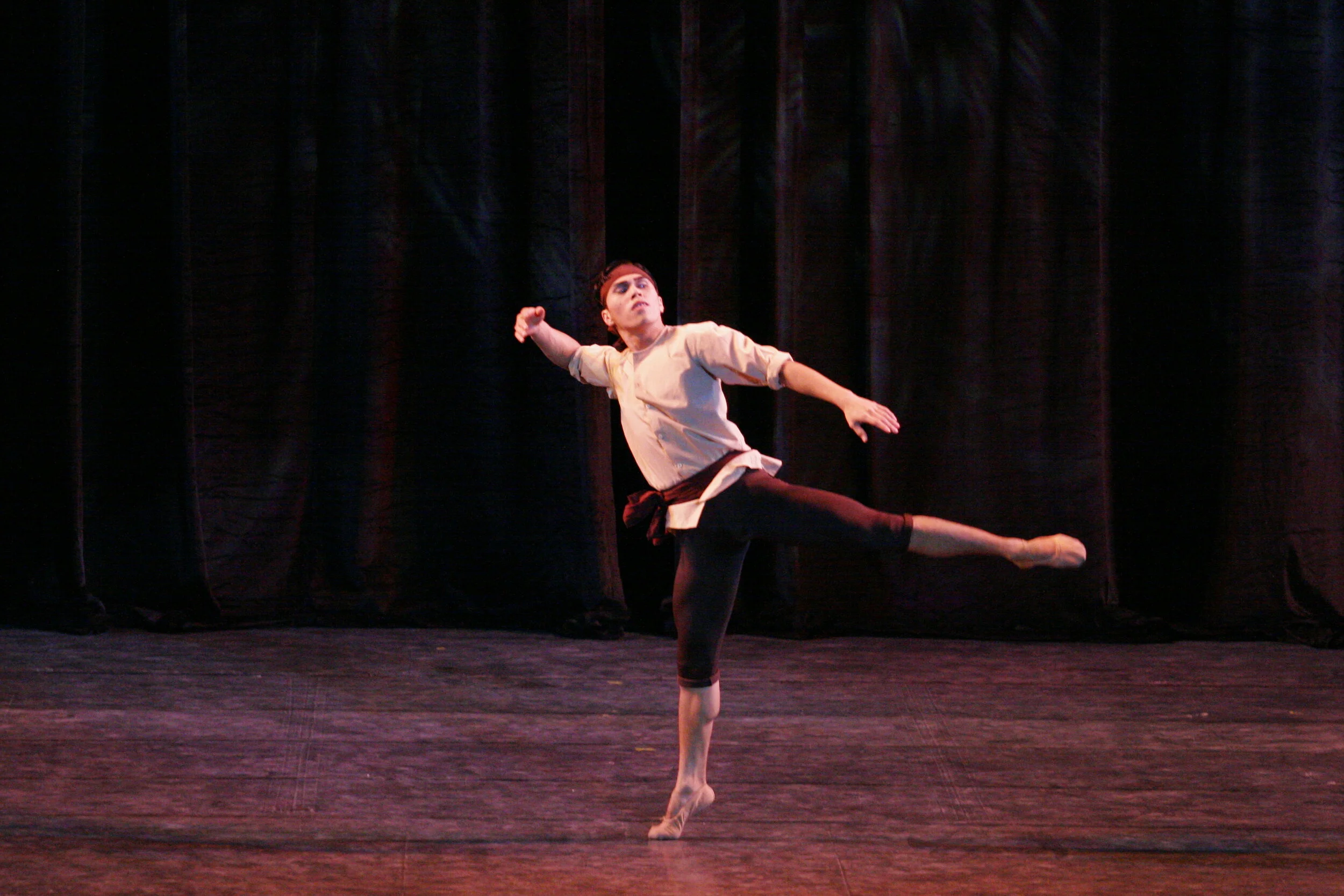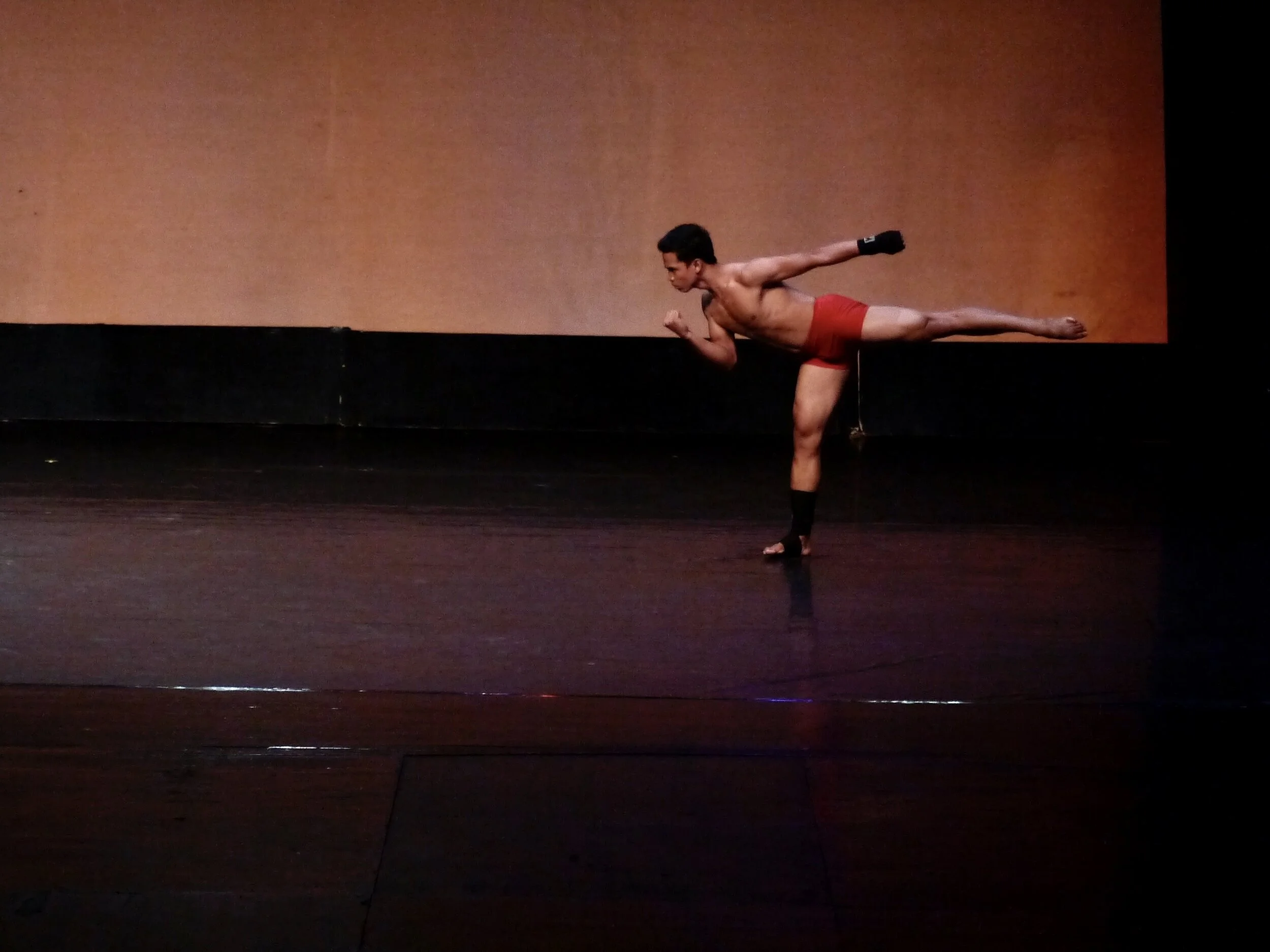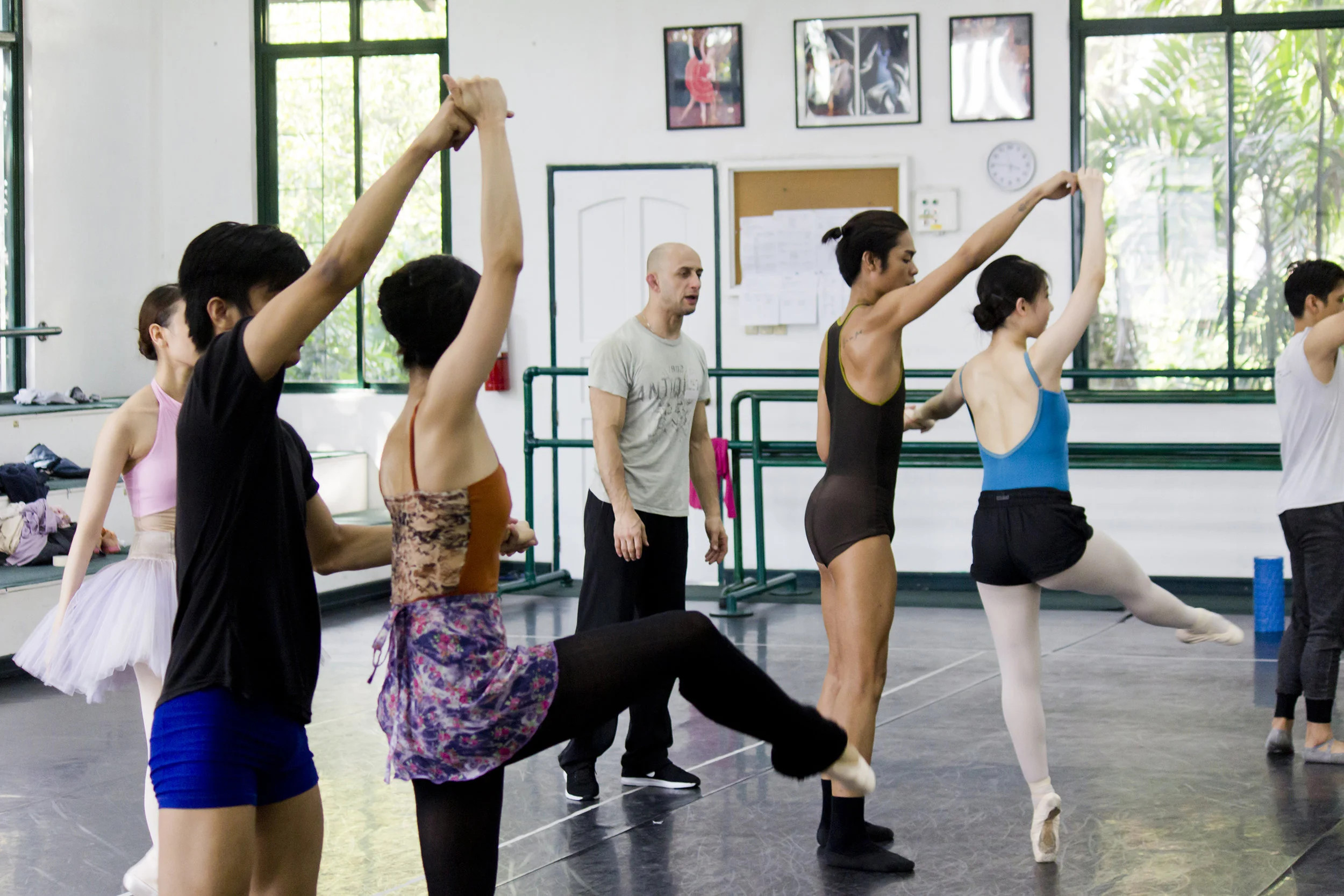All in Choreography In Focus
Agnes Locsin’s Arachnida is among Ballet Manila’s most performed pas de deux.
The masked Roman soldiers, called Morions, would roam the streets to relate the story of the centurion Longinus who is said to have pierced the side of the crucified Jesus with a spear and was supposedly healed by the blood of Jesus.
It was performed in a video entry for the competition by Project Ballet Futures scholars Juan Angelo De Leon, Germaine Dawal and John Stanley Alamer who showed dexterity, quick-footedness and agility through the fast-paced piece.
The gold winner for senior group contemporary in the 2021 Asian Grand Prix video competition, Border is a gripping look at the plight of refugees.
Bayani reflects Bonifacio’s willingness to fight, so that the mode is like he is going to battle. In interpreting the piece, Geri advised Niño to internalize those qualities so that the hero’s character would shine through.
When an opportunity came for Rudy to choreograph a piece for the CCP Ballet Competition in 2018, the former Ballet Manila principal dancer had a eureka moment. Why not combine ballet and boxing, two things that interest him the most?
Butterflies inspired Spanish choreographer David Campos Cantero to create Velvet Wings for Ballet Manila in 1998.
In his choreography called Gomburza, Ernest Mandap wanted to pay tribute to the priests not just by extolling their heroism but also by touching on their humanity and the rawness of their emotions at a most crucial time.
Last year, tasked to create contemporary pieces for Ballet Manila’s participants in the CCP Ballet Competition, Gerardo Francisco – who is the company’s resident choreographer – decided to revisit the theme.
The number is about the journey of these two men as they reach for their goals together, like brothers.
Deconstructing Gershwin made its Asian debut and Philippine premiere in July 1999 when Ballet Manila featured it in its season production, An Evening of Filipino Ballet.
For George Birkadze, it all starts with the sound. When he encounters music that he likes – bold, striking, full of character – he just has to stop, listen and immerse himself in it.
Fuga was inspired by news coverage about conflicts in such places as Syria and locally, Marawi.
Love for nature and environmental protection are the themes underscored in Alamat: Si Sibol at Si Gunaw, which Ballet Manila premiered in 2009.
One of Osias Barroso’s earliest assignments as a choreographer was also among the most challenging.
In 1998, Ballet Manila premiered Ric Culalic’s Arnis. As its title indicates, it was inspired by the ancient Filipino martial art of wielding bamboo sticks which dates back to pre-Spanish colonial Philippines
Choreographer Edna Vida doesn’t like to make things easy for dancers. In fact, Pulp Asia – which was commissioned by Ballet Manila in 1998 – was meant for them to push their limits.
The Filipino film Muro-Ami made a big impression on Gerardo Francisco when he saw it on the big screen in 1999.
Labingdalawang Masasayang Prinsesa was one of the three tales featured in Tatlo Pang Kuwento ni Lola Basyang, the second set of ballet adaptations that Ballet Manila based on the stories of Severino Reyes and which premiered in 2013.
If there’s one original choreography that has truly become a classic in Ballet Manila’s continuously growing repertoire, it’s none other than Ecole.




















